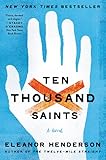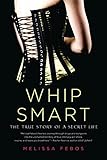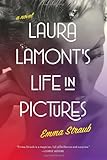
As I write this, my old neighbors in Brooklyn are still digging out from yet another brutal storm while I sit in our new home in Vancouver, British Columbia, the sun shining prettily outside our windows, gulls cawing as they swoop between the masts of the sailboats bobbing in the harbor half a minute’s walk from our front door. For a few days, it looked like we might never make it here. We had been planning our move to Canada for months, but our load-out day was October 30, the day Hurricane Sandy made landfall. Needless to say, we had to reschedule, but the movers arrived in Brooklyn at 10 o’clock the next morning, and somehow we managed to thread the needle between the complete shutdown of the subway and region-wide gas shortages to sneak our way to the airport and out of town.
A couple days after I arrived, a family friend asked me, half-joking, if I felt “survivor’s guilt” about my hairs-breadth escape from New York. I don’t. What I feel instead is a deep sense of loss mixed with a still deeper appreciation of the dumb luck that offered me a front row seat onto one of those rare collisions of time and place that creates the kind of literary scene that has existed for the past decade in Brooklyn.
 Brooklyn, with its swarms of goateed hipsterati making artisanal cheeses and tapping out novels at corner coffee shops, is easy to mock, and in truth, the place is a little precious. But for every stay-at-home mom writing imaginary novels between trips to the yoga studio and every coffee house poseur stroking his beard over his battered Penguin edition of Crime & Punishment, there are three or four young, talented writers and editors hard at work on actual pages of actual novels. Mock all you want, but for the moment, if you want to write literary fiction or poetry, Brooklyn is still the place to be.
Brooklyn, with its swarms of goateed hipsterati making artisanal cheeses and tapping out novels at corner coffee shops, is easy to mock, and in truth, the place is a little precious. But for every stay-at-home mom writing imaginary novels between trips to the yoga studio and every coffee house poseur stroking his beard over his battered Penguin edition of Crime & Punishment, there are three or four young, talented writers and editors hard at work on actual pages of actual novels. Mock all you want, but for the moment, if you want to write literary fiction or poetry, Brooklyn is still the place to be.
Longtime New Yorkers tend to get misty-eyed about the seedy old Lower East Side and pre-Giuliani Times Square, but this is mostly nostalgia talking. Times Square may have had its roguish charm when Kerouac and the Beats were trawling for kicks in the early 1950s and the Lower East Side may have possessed a genuine revolutionary spirit in the Hippie Era, but by the time I got there in the mid-80s, when I first came to New York for college, most of the Lower East Side was a crack-ridden pit and Times Square was worse.

 Everywhere you looked there were junkies fixing in open doorways and hookers giving blow jobs in parked cars. The subways were unrideable late at night and everybody had a mugging story. One friend of mine got held up by a nine-year-old with a pistol. It all sounds so cool and edgy when you read about it in books like Eleanor Henderson’s Ten Thousand Saints and Patti Smith’s Just Kids, but the reality was ugly and depressing. And dangerous. In 1987, the year I graduated from NYU and left New York the first time, 2,016 people were murdered in the five boroughs; the year before, a gang of white kids from Howard Beach chased Michael Griffith, a Trinidadian immigrant, onto the Shore Parkway where he was run over by a speeding car, one of a series of racially motivated crimes that brought the city to the brink of full-scale riot.
Everywhere you looked there were junkies fixing in open doorways and hookers giving blow jobs in parked cars. The subways were unrideable late at night and everybody had a mugging story. One friend of mine got held up by a nine-year-old with a pistol. It all sounds so cool and edgy when you read about it in books like Eleanor Henderson’s Ten Thousand Saints and Patti Smith’s Just Kids, but the reality was ugly and depressing. And dangerous. In 1987, the year I graduated from NYU and left New York the first time, 2,016 people were murdered in the five boroughs; the year before, a gang of white kids from Howard Beach chased Michael Griffith, a Trinidadian immigrant, onto the Shore Parkway where he was run over by a speeding car, one of a series of racially motivated crimes that brought the city to the brink of full-scale riot.
You can argue, as many did back then, that the rigors of everyday life in New York tested the mettle of young writers, tossing out those either untalented or unserious enough to last. But this argument, I think, is based on a hopelessly romantic notion of what nurtures and grows good literary writing. Of course, no writer who has never known real suffering will ever create anything worth reading, but for the most part, books are survivors’ tales. Suffering and crisis are always central subjects of good books, but writers who themselves have descended into crisis, whether chased there by their own demons or by societal chaos, tend not to write good books. They’re too busy digging themselves out of their deep, dark hole.
This isn’t necessarily true of all art forms. For instance, popular music, whether it’s rock or hip-hop or the blues, is mostly the product of young kids finding new ways to use old instruments and is, almost by definition, an outsider art form. The Lower East Side of the 1970s, just like the South Bronx of the 1980s and working-class London and Liverpool in the early 1960s, produced some of the last century’s great popular music. Listen to the mad thunder of Keith Moon’s drumming on The Who’s early albums or the angry rhymes of early rappers like Public Enemy or Run-D.M.C., and you can hear, almost in real time, the rage of the streets outside the studio.
Good writing, on the other hand, requires distance, as well as a certain level of education and economic stability. Writers need time and space to work — that room of one’s own Virginia Woolf talked about — as well as a vibrant cultural scene to feed off of when they’re not writing. Like the Left Bank of Paris in the 1920s and New York’s Greenwich Village a few years later, today’s Brooklyn has hit that cultural sweet spot that makes it ripe for an outpouring of great writing: It is near a major center of culture, but its rents are still low enough to let younger writers cobble together a living out of a bunch of odd jobs, while crime and chaos are kept just far away enough to allow for quiet reflection.
Everybody knows the boldface names who grace the borough. Jennifer Egan, Jhumpa Lahiri, and Colson Whitehead live in Fort Greene; transplanted Brit Martin Amis lives in Cobble Hill; and you could stock a fair-sized bookstore with the novels of writers now living Park Slope. But while it’s always nice to have a few famous people around to invite to book festivals and hobnob with at parties, what drives the Brooklyn Renaissance, if you want to give it a name, is the lively mix of young writers and upstart indie magazines and publishing houses, all within shouting distance of one another. Throw in several first-rate small bookstores and access to the mainstream publishing industry, and you have the makings of a burgeoning cultural mecca.
I was blind to the literary ferment around me for the first three or four years I lived in Brooklyn after I moved back to New York with my wife in 2004. Twenty years earlier, when I was at NYU, Brooklyn was, to me, an industrial wasteland full of abandoned factories and grim housing projects. This was only partly true even then, but by 2004, even some of the borough’s roughest neighborhoods were on the mend and old factories in DUMBO and Williamsburg were filling up with indie presses and other arts organizations. But I didn’t see it. To me, Manhattan was where the culture was; Brooklyn was just a pleasant, less expensive place to live.
Then, in early 2008, I took a writing class at Sackett Street Writers’ Workshop. For me, the success of Sackett Street, which has grown from a handful of writers sitting around founder Julia Fierro’s kitchen table in 2002 to a program boasting 31 part-time instructors and hundreds of students, illustrates the true grassroots nature of Brooklyn’s literary culture. Unlike most other independent creative writing programs, which run the bulk of their classes online, Sackett Street is fully analog, the classes meeting in person, usually in small groups of seven or eight sitting around the workshop leader’s living room. As with any writing course, the quality of the writing in the workshop varies widely, but the discussion in the two classes I attended was always spirited and serious, and I ended up making a number of writer friends I keep up with to this day.
More importantly, though, the Sackett Street classes introduced me to the daily reality behind the cliché of literary Brooklyn. Fierro is a relentless Facebook poster, and I began to hear about readings by little-known writers I admire at Book Court and Greenlight Bookstore. After I attended a few of those, I began to run into indie publishers I only knew by reputation, like Hanna Tinti of One Story and Johnny Temple of Akashic Books. And faster than you can say “indie chic,” I felt a part of a genuine literary scene.

 In an article I wrote earlier this year for Prospero, The Economist magazine’s arts and culture website, I called contemporary Brooklyn “a vertically integrated factory for literature.” I was promptly cyber-mocked by the good folks at The Awl, but I stand by my metaphor. Over and over in the past few years, I have watched a young writer come to Brooklyn and begin to climb the closest thing to a career ladder that exists in the literary world, first figuring out how to eke out a living in publishing or teaching, then testing the waters by publishing stories in local lit mags or reading at local reading series before breaking through with a first book. Some of these writers, like Emma Straub, author of Laura Lamont’s Life in Pictures, and Melissa Febos, author of Whip Smart, have already begun to make their mark in the public consciousness. Dozens of others, now finishing first books or just starting to write publishable stories, will break through in years to come.
In an article I wrote earlier this year for Prospero, The Economist magazine’s arts and culture website, I called contemporary Brooklyn “a vertically integrated factory for literature.” I was promptly cyber-mocked by the good folks at The Awl, but I stand by my metaphor. Over and over in the past few years, I have watched a young writer come to Brooklyn and begin to climb the closest thing to a career ladder that exists in the literary world, first figuring out how to eke out a living in publishing or teaching, then testing the waters by publishing stories in local lit mags or reading at local reading series before breaking through with a first book. Some of these writers, like Emma Straub, author of Laura Lamont’s Life in Pictures, and Melissa Febos, author of Whip Smart, have already begun to make their mark in the public consciousness. Dozens of others, now finishing first books or just starting to write publishable stories, will break through in years to come.
To those who argue that a literary scene like Brooklyn’s breeds insularity, I would say: just wait a few years. Literary Brooklyn, like Greenwich Village and the Left Bank before it, won’t last much longer as an incubator of literary talent. Rents, already sky-high in Brownstone Brooklyn, are rising fast in newly gentrifying neighborhoods like Bushwick. For now, the economics works. Young, smart kids can still move to the outerborough neighborhoods, where if they’re willing to live in tight spaces and work long hours, they can serve their apprentice years among other young, smart readers and writers until they begin to have some success, by which time they can afford to trade up to fancier digs in Cobble Hill or Park Slope.
But other smart, young New Yorkers, especially those who work in media and finance, where money is more plentiful, have already begun to discover these one-time no-go neighborhoods, driving up rents and upsetting the delicate economic balance. If you ask me, the ideal moment for the Brooklyn Renaissance — the years just after the 2008 financial crisis — has already come and gone, and by the time Wall Street finds its footing again in a year or two, much of Brooklyn will be like the Lower East Side is now: too pricey for all but young bankers and trustafarians.
So maybe Hurricane Sandy was trying to tell me something and I got out just in time. Eric Obenauf, editor-in-chief at the indie press Two Dollar Radio, who fled Brooklyn’s high rents a few years ago, has written an essay, appearing on The Millions this morning, extolling the virtues of the literary life away from cultural hothouses like Brooklyn. Maybe he’s right, and in a few years I’ll be telling all my friends to ditch the 718 and join me north of the border. But I’m not ready to go there yet. Vancouver is one of the prettiest cities on earth, and from previous visits I know it has a healthy arts scene, bolstered by a growing movie industry, as well as great bookstores and local theater companies. But it’s not Brooklyn. Not for me. Not yet, anyway.
Image Credit: Wikipedia









